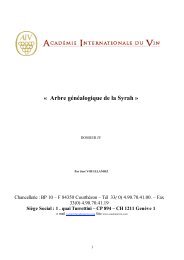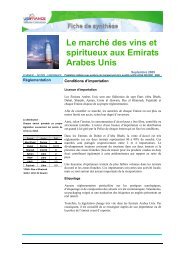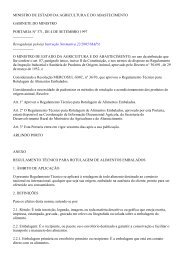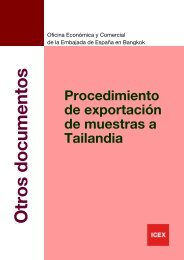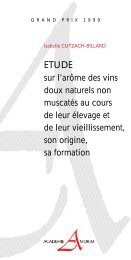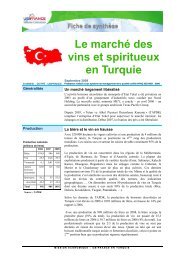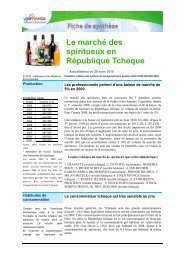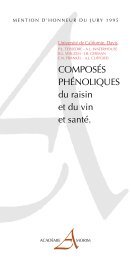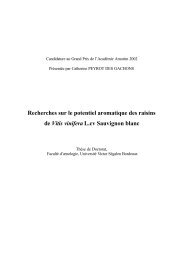CONSIDERACIONES GENERALES SOBRE LOS VINOS.se pue<strong>de</strong> casi siempre, cuando se tiene costumbre enesta clase <strong>de</strong> ensayos, reconocer á cuál <strong>de</strong> <strong>los</strong> dosprecipitados hay que atenerse. En todo caso, se podráfiltrar y buscar, <strong>com</strong>o se ha dicho antes, el número<strong>de</strong> gotas necesarias para saturar un volumen <strong>de</strong>terminado<strong>de</strong>l líquido filtrado. En este líquido filtrado<strong>los</strong> copos amorfos aparecerán antes que se presenteun nuevo precipitado cristalino.»«Una precaución, que es bueno no omitir nunca,consiste, <strong>de</strong>spués <strong>de</strong> haber medido 10 c. c. <strong>de</strong> <strong>vinos</strong>obre que se quiere ensayar, en colocar el vaso que<strong>los</strong> contiene en el vacío <strong>de</strong> la máquina neumática, conel objeto <strong>de</strong> espulsar la casi totalidad <strong>de</strong>l ácido carbónico.Esto es útil sobre todo cuando se trata <strong>de</strong><strong>vinos</strong> nuevos é igualmente <strong>de</strong> <strong>los</strong> <strong>vinos</strong> remontadosque están siempre mas ó menos cargados <strong>de</strong> ácidocarbónico, principalmente en <strong>los</strong> casos en que la enfermeda<strong>de</strong>s reciente.»Pasemos ahora á exponer algunos datos sobre laaci<strong>de</strong>z <strong>de</strong> <strong>los</strong> <strong>vinos</strong> mas conocidos, <strong>de</strong>biendo advertirque todos el<strong>los</strong> se refieren á un litro <strong>de</strong> las diferentesmuestras ensayadas.Los Sres. Blaan<strong>de</strong>ren y Güning han encontradola siguiente fuerza acida en <strong>los</strong> <strong>vinos</strong> que han analizado:Carbonatosódiconeutralizado,Equivalente<strong>de</strong> aci<strong>de</strong>zen S05, HO.Vino <strong>de</strong> Ma<strong>de</strong>ra 2,43 gr. 2,25 gr.Tenerife 2,312,14— Oporto1,801,67— Rhin2,121,97— Borgoña (Beaune)...1,941,79— Champaña2,262,09— Rivasaltas (moscatel)2,262,09
192 PARTE II!.—NOTAS Y ADICIONES.Vino <strong>de</strong> 2,32 2,15—2,32 2,15— 2,38 2,21— 2,56 2,37— . 2,69 2,49— 2,75 2,55— 2,82 . 2,63— 2,88 2,66— 2,88 2,66—3,20 2,96— 2,26 2,09—3,07 2,84— Tavel 3,39 3,08— 13,20 12,21Los mismos químicos han separado <strong>los</strong> ácidos pormedio <strong>de</strong> la <strong>de</strong>stilación, <strong>de</strong> <strong>los</strong> que son fijos y quedanen el vino; habiendo obtenido para la parte acidavolátil el siguiente resultado:,,„„,,„„„,„ Equivalentee n i l c i < l 0 a c é t i c osódicoSO3.I10„„,„.„,. . anhidro correspondiente,1neutralizado. ^R 3^1,02 gr. 1,67 gr. 0,94 gr— Tenerife 0,70 1,14 0,650,58 0,95 0,54— Rhin 0,41 0,66 0,38•— Borgoña (Beaune) 0,19 0,31 0,180,39 0,64 0,360,52 0,85 0,480,53 0,86 0,490,65 1,06 0,600,54 0,88 0,50— Cotes (blanco)... 0,77 1,26 0,71— Saint-Georges.... 0,79 1,29 0,730,41 0,67 0,38— Borgoña (Pom- •0,41 0,67 0,380,38 0,62 0,36





